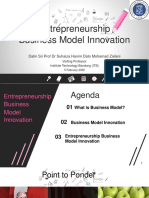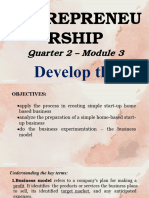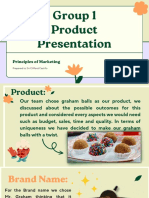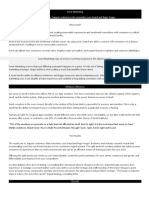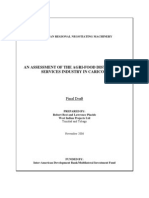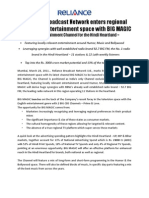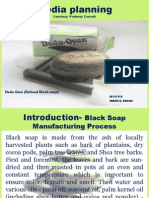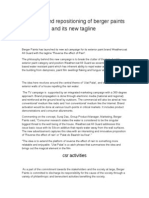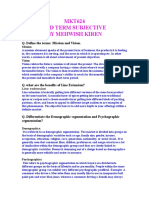0% found this document useful (0 votes)
34 views17 pagesLecture 5 Business Model Development
The course 'Entrepreneurship and Innovation' led by Dr. Yasmeen Almaleeh focuses on the fundamentals of entrepreneurship, including opportunity identification, business model development, and value creation. Students will engage in practical projects to develop sustainable business ideas and present them to stakeholders. Key topics include the Business Model Canvas, customer segmentation, value proposition, and the business modeling process.
Uploaded by
Shehab HassanCopyright
© © All Rights Reserved
We take content rights seriously. If you suspect this is your content, claim it here.
Available Formats
Download as PPTX, PDF, TXT or read online on Scribd
0% found this document useful (0 votes)
34 views17 pagesLecture 5 Business Model Development
The course 'Entrepreneurship and Innovation' led by Dr. Yasmeen Almaleeh focuses on the fundamentals of entrepreneurship, including opportunity identification, business model development, and value creation. Students will engage in practical projects to develop sustainable business ideas and present them to stakeholders. Key topics include the Business Model Canvas, customer segmentation, value proposition, and the business modeling process.
Uploaded by
Shehab HassanCopyright
© © All Rights Reserved
We take content rights seriously. If you suspect this is your content, claim it here.
Available Formats
Download as PPTX, PDF, TXT or read online on Scribd
/ 17
















